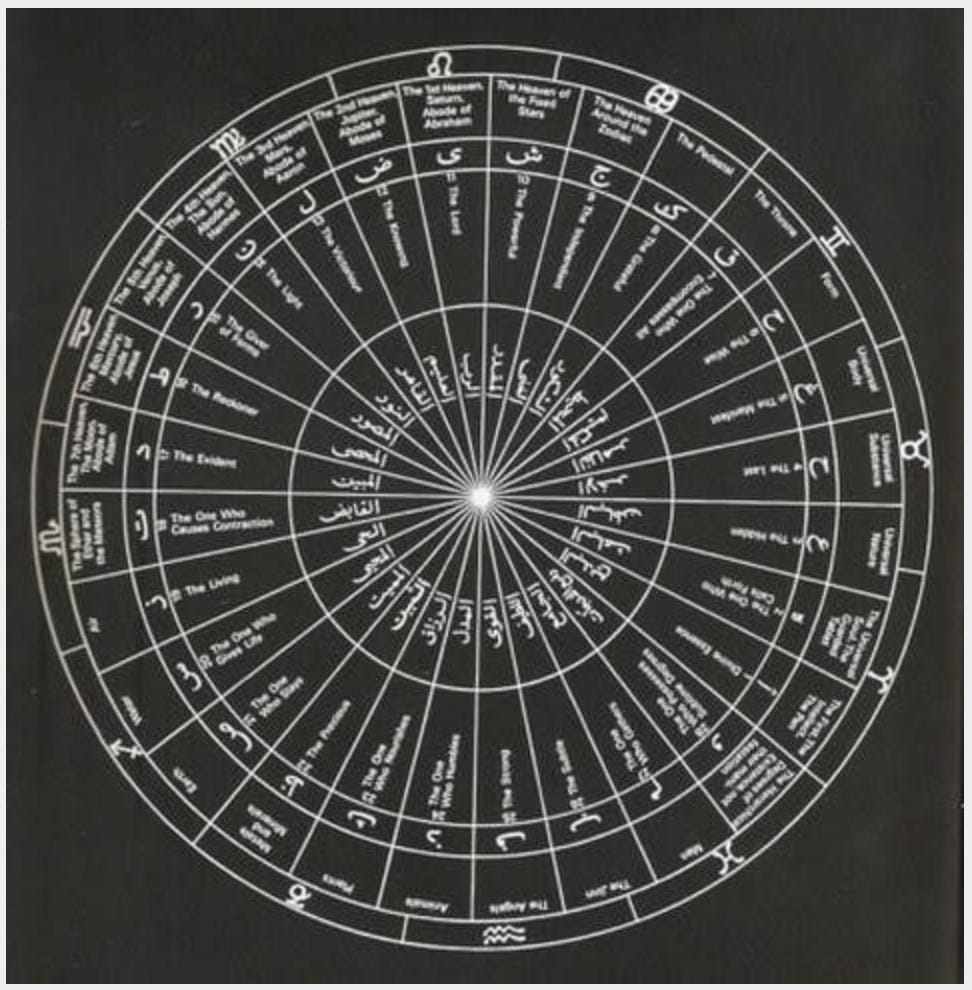While in Lahore, I was able to see Ayeda Husain, author of Sufi Tarot speak at the Lahore Literary Festival, who discussed the lost Sufi connections and possible origins of Tarot cards.
I’ve had a tarot practice for years—I had always been drawn to the cards and then when I was in college (at this point 17 years ago!) my friend Grisele gave me a reading. I was there asking about my love life and issues I was having and the cards basically were like—bitch, that’s not important, you have other things you need to be focusing on. And that it was around delving into the mystic, and getting closer to my own spiritual understandings. That really prompted me to start leaning into Tarot, and for a long time I kept it more as a secret, but have been more open about it in the last few years.
The research and origins of Tarot are deeply contested, but they are most often associated with Italian decks in the 1400s.
In Ayeda Husain’s research, like most things in our colonized world, she found that’s not necessarily true. That there are deep Sufic origins to the decks, and that the first tarot deck and cards that are discovered are from The Mamluk decks, originating from Northern Africa and held in the Topkapi Museum of Istanbul, are dated to be from the 1300s, at least 100 years before the Italian decks. Additionally, the Italian decks seemed to have heavily lifted (ie, appropriated) a lot of the imagery, and updated them to their own context. The most famous Rider-Waite tarot deck is from the 1700-1800s, hundreds of years after the Mamluk decks.
(Top: Mamluk decks; bottom: Ayeda Husain’s deck)
Like a lot of Sufic and Islamic history, the fall of Andalusia resulted in the loss and appropriation of a lot of Muslim knowledge, particularly Muslim esoteric knowledge, which was then credited to Europeans and western traditions.
The history of playing cards are said to come from China in the 9th century, with the Mamluk cards coming in the 1300s. At the time, the Mamluk cards were used both as a game and as an exploration of self and for divination practices.
The Major Arcana cards are said to have actually derived from the writing of Ibn Arabi, a Sufi mystic born in 1165 in Spain. Ibn Arabi wrote extensively on the divinity of letters and of the divinity of Allah’s names. Some of Ibn Arabi’s writing explored the nation of letters, and the divine science behind the names. Ibn Arabi created the Cosmology of the Letters, drawing from some of the known names of Allah, and to represent a cycle of access into divine wonder. It is said that this cycle is what makes the basis of the Major Arcana cards in the tarot.
The cycle moves us from the material world, into a link to the divine, and then beyond what we know into the divine mystery.
Some of the artistry around the cards, and the names also derive from Sufic and Indigenous practices. There is a Sufic practice of Chila (meditation) that comes from hanging oneself upside down for an extended period of time. This is to elevate heart knowledge over mind knowledge, and to see things from a different perspective, which is correlated to the Hanged Man. It’s said that this practice developed in South Asia, as the Sufic Mystics performed their Chilas of isolation and incorporated indigenous yogic and tantric practices to reach enlightenment.
Like all things, everyone and every tradition who touched these cards have influenced their development, particularly as a tradition in terms of what they represent for people, how they’ve been incorporated into other spiritual and divinatory practices, and how wide they’ve spread and what meanings they’ve taken on. But it’s really cool and important to highlight the link between Sufism and tarot, particularly in a long history of the erasure of Muslim esoteric knowledge and misattribution to the west due to colonization.
The names and archetypes, according to Dai Leon in Origins of the Tarot:
0. Large Recompensor // Fool
1. Independent // Magician
2. Influencer // Empress
3. Supporter // Popess
4. Knower // Emperor
5. Victorious // Pope
6. Light // Temperance
7. Form Giver // Lovers
8. Reckoner // Chariot
9. Guardian // Fortitude
10. Curtailer // Wheel
11. Living // Hermit
12. Quickener // Hanged Man
13. Slayer // Death
14. Preciously Valued // Tower
15. Nourisher // Star
16. Degrader // Devil
17. Powerful // Moon
18. Minute Observer // Sun
19. Gatherer // Angel
20. Elevator // Justice
21. Surrounder // World
Which is to also say… I am offering tarot readings! You can book one by emailing team@fatimahasghar.net
xo





